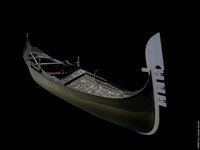Das Schappale ist eine Flitterkrone. Es wird in Klosterarbeit hergestellt und nur von Mädchen getragen - das letzte Mal am Tag der Hochzeit.
Der Kopfring ist aus Pappe, mit einem Holzreifen gestreift und mit schwarzem Samt überzogen. An der Stirnseite ist durch breite Silberlitze ein Feld abgetrennt, in dem mit Silberfaden das Jesus-Monogramm "IHS" gestickt ist. Über dem Kopfring ein 24-strahliges, schüsselförmiges Drahtgestell. Zum Ring hin ist ein rotes Band eingeschlungen. An jedem zweiten Draht befindet sich ein mit Golddraht umwickelter Pappstreifen. Drähte dazwischen mit Kreispaaren und Rosetten aus Spiraldraht. Einige Flindern und farbige Perlchen. Der Kronenaufbau wirkt licht. Kleinere Drahtornamente sind aufgerappelt.
en

